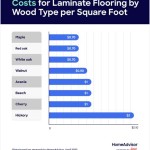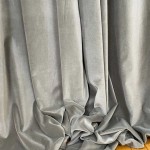How To Effectively Scrub Wood Floors: A Comprehensive Guide
Maintaining the beauty and longevity of wood floors requires consistent and effective cleaning practices. Scrubbing, when done correctly, is a crucial part of these practices, removing embedded dirt, grime, and stains that routine sweeping and mopping might miss. This article provides a detailed guide on how to scrub wood floors effectively, ensuring a clean and well-maintained surface without causing damage.
The process of scrubbing wood floors involves several steps, from preparation and selecting the right cleaning solutions to the actual scrubbing and finishing touches. Understanding each step and adhering to proper techniques is essential for achieving optimal results and preserving the integrity of the wood.
Before embarking on any cleaning endeavor, it is critical to identify the type of wood flooring present. Different types of wood, such as hardwood, softwood, engineered wood, or laminate, require different cleaning approaches. Using the wrong cleaning solution or scrubbing technique can lead to irreversible damage, including warping, discoloration, and scratching. Consulting the flooring manufacturer's guidelines is highly recommended to ensure compatibility between the cleaning products and the specific type of wood floor.
Furthermore, consider the finish applied to the wood floor. Surface finishes, such as polyurethane, penetrate the wood and create a protective layer, while penetrating finishes, like oil-based finishes, soak into the wood fibers. Wood floors with surface finishes generally require less intensive cleaning than those with penetrating finishes, which are more susceptible to water damage and staining. Understanding the finish type allows for the appropriate selection of cleaning solutions and scrubbing methods.
Preparation is Key: Removing Loose Debris and Protecting the Area
Before commencing the actual scrubbing process, thorough preparation is paramount. This involves removing all loose debris from the floor surface. This can be achieved through sweeping, vacuuming, or using a dust mop. Pay particular attention to corners, edges, and areas under furniture, as these are prone to accumulating dust, dirt, and pet hair.
Vacuuming is often the preferred method, as it effectively removes dirt and debris embedded in crevices and between floorboards. When vacuuming, use a soft brush attachment specifically designed for wood floors to prevent scratches. Avoid using vacuum cleaners with beater bars, as these can damage the finish over time.
After removing loose debris, protect the surrounding areas. Cover delicate furniture with drop cloths to prevent accidental splashes or spills. Place mats or towels at doorways to minimize tracking of water or cleaning solution onto other floor surfaces. Additionally, open windows to provide adequate ventilation during the scrubbing process.
For particularly stubborn dirt or debris, a pre-treatment with a damp mop or cloth may be necessary. Use a mild cleaning solution diluted with water and gently wipe the affected areas. Avoid soaking the floor, as excessive moisture can seep into the wood and cause damage.
Selecting the Right Cleaning Solution: Balancing Effectiveness and Preservation
Choosing the appropriate cleaning solution is crucial to effectively removing dirt and grime without harming the wood floor. Harsh chemicals and abrasive cleaners should be strictly avoided, as they can strip the finish, discolor the wood, and leave behind a dull residue. Neutral pH cleaners specifically formulated for wood floors are generally the safest and most effective option.
Alternatively, a homemade cleaning solution can be prepared using readily available ingredients. A mixture of water and white vinegar is a common choice, with a ratio of approximately one cup of vinegar to one gallon of water. Vinegar acts as a natural disinfectant and helps to dissolve dirt and grime without leaving a harsh residue. However, excessive vinegar can damage some finishes, so using the correct dilution ratio is vital.
Another option is to use a mild dish soap diluted with water. Ensure the dish soap is gentle and free of harsh chemicals or abrasive additives. Use only a small amount of soap to avoid leaving behind a soapy residue. After scrubbing with the soap solution, rinse the floor thoroughly with clean water to remove any remaining residue.
Always test the chosen cleaning solution in an inconspicuous area before applying it to the entire floor. This allows for observation of any adverse reactions, such as discoloration or damage to the finish. If any negative effects are observed, discontinue use and seek an alternative cleaning solution.
Consider the type of scrubbing tool employed. A soft-bristled scrub brush or a microfiber mop is generally recommended. Abrasive scrub brushes or steel wool should be avoided, as they can scratch the finish and damage the wood fibers. A microfiber mop is particularly effective at removing dirt and grime while minimizing the amount of water applied to the floor.
The Scrubbing Process: Applying Technique and Maintaining Moisture Control
Once the cleaning solution and scrubbing tool are selected, the actual scrubbing process can begin. Start by applying the cleaning solution sparingly to a small section of the floor. Avoid saturating the floor with excessive amounts of liquid, as this can lead to water damage. Use a spray bottle to evenly distribute the cleaning solution or dip the scrub brush or mop into the solution and wring out any excess liquid.
Scrub the floor in a circular motion, applying moderate pressure to loosen dirt and grime. Overlapping strokes will ensure consistent cleaning coverage. Pay particular attention to areas with noticeable stains or heavy traffic, as these may require more vigorous scrubbing.
For stubborn stains, allow the cleaning solution to dwell on the affected area for a few minutes before scrubbing. This allows the solution to penetrate the stain and loosen it from the wood fibers. Avoid leaving the solution on the floor for extended periods, as this can increase the risk of water damage.
After scrubbing a section of the floor, use a clean, damp cloth or mop to remove the dirty cleaning solution. Wring out the cloth or mop frequently to prevent reintroducing dirt and grime back onto the floor. Rinse the cloth or mop thoroughly with clean water between each wringing to ensure optimal cleaning effectiveness.
Continue scrubbing and rinsing in sections until the entire floor has been cleaned. Work systematically to avoid missing any areas. Periodically inspect the floor for any remaining stains or dirt and re-scrub those areas as needed.
Maintain moisture control throughout the scrubbing process. Excessive water can seep into the wood and cause warping, swelling, and discoloration. Always wring out the scrub brush or mop thoroughly before applying it to the floor. Avoid leaving puddles of water on the floor surface. If any spills occur, wipe them up immediately with a dry cloth.
Once the entire floor has been scrubbed and rinsed, allow it to air dry completely. Open windows and turn on fans to promote air circulation and expedite the drying process. Avoid walking on the floor until it is completely dry to prevent tracking dirt and grime onto the clean surface. The drying time may vary depending on the humidity and temperature levels.
After the floor has dried, inspect it for any remaining streaks or water spots. If any are present, wipe them away with a clean, dry cloth. A final buffing with a microfiber cloth can help to restore the shine and luster of the wood floor.
Regular scrubbing, when performed correctly, is an integral part of maintaining the beauty and longevity of wood floors. By following the guidelines outlined in this article, individuals can effectively remove dirt, grime, and stains without damaging the wood or its finish. Consistent and careful cleaning practices will help to preserve the appearance and value of wood floors for years to come.

How To Clean Hardwood Floors Reviews By Wirecutter

The 5 Best Ways To Clean Hardwood Floors Chet S Cleaning

How To Clean Hardwood Floors Like A Pro

How To Clean Hardwood Floors Without Damaging Them

The Right Way To Clean Wood Floors

How To Clean Wood Floors Carefully And Deeply O Cedar

How To Clean And Shine Hardwood Floors Fast Easy Tips

Diy Buffing Techniques For Homeowners Mr Sander

Wood Floor Deep Cleaning Re Coat Union

How Do You Deep Clean Wood Floors Chem Dry







